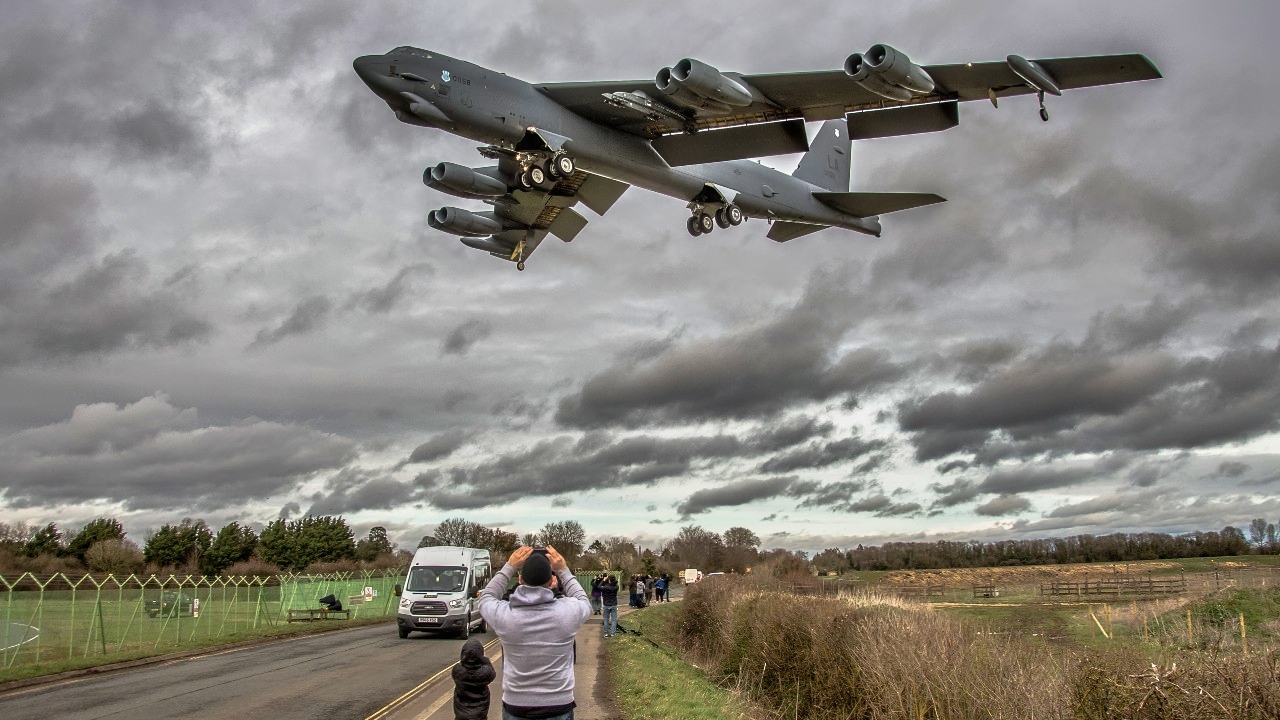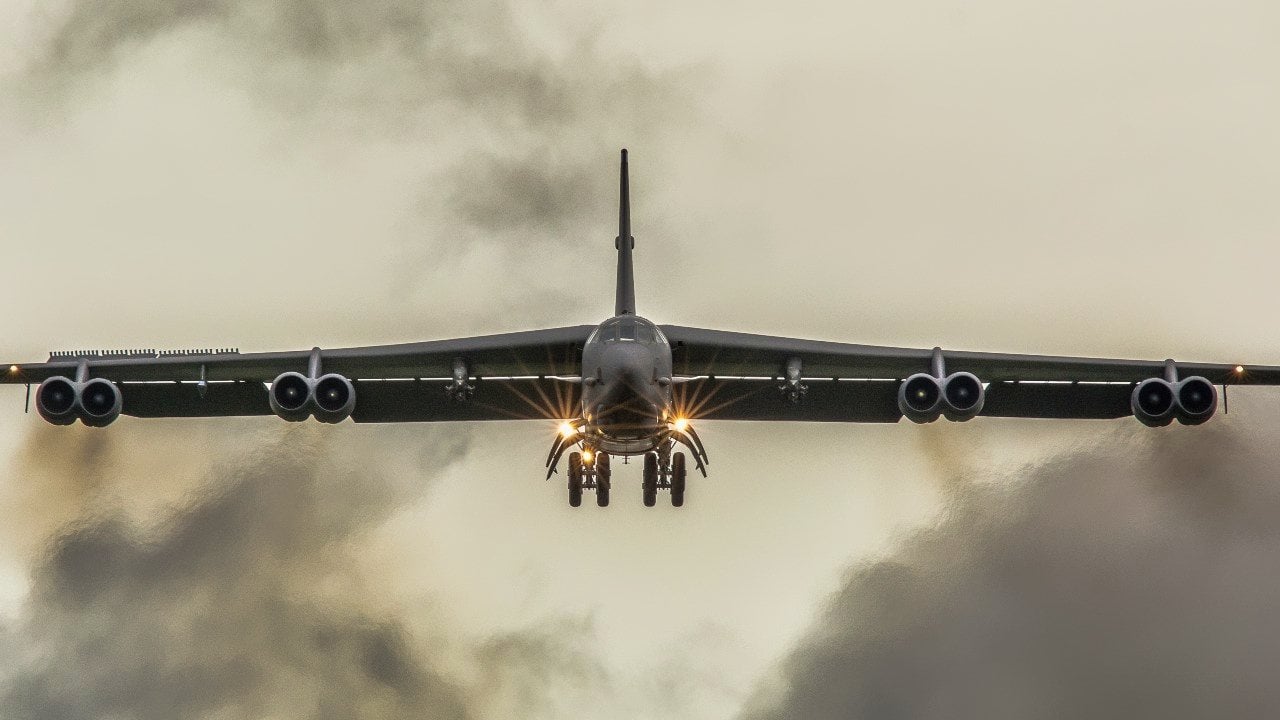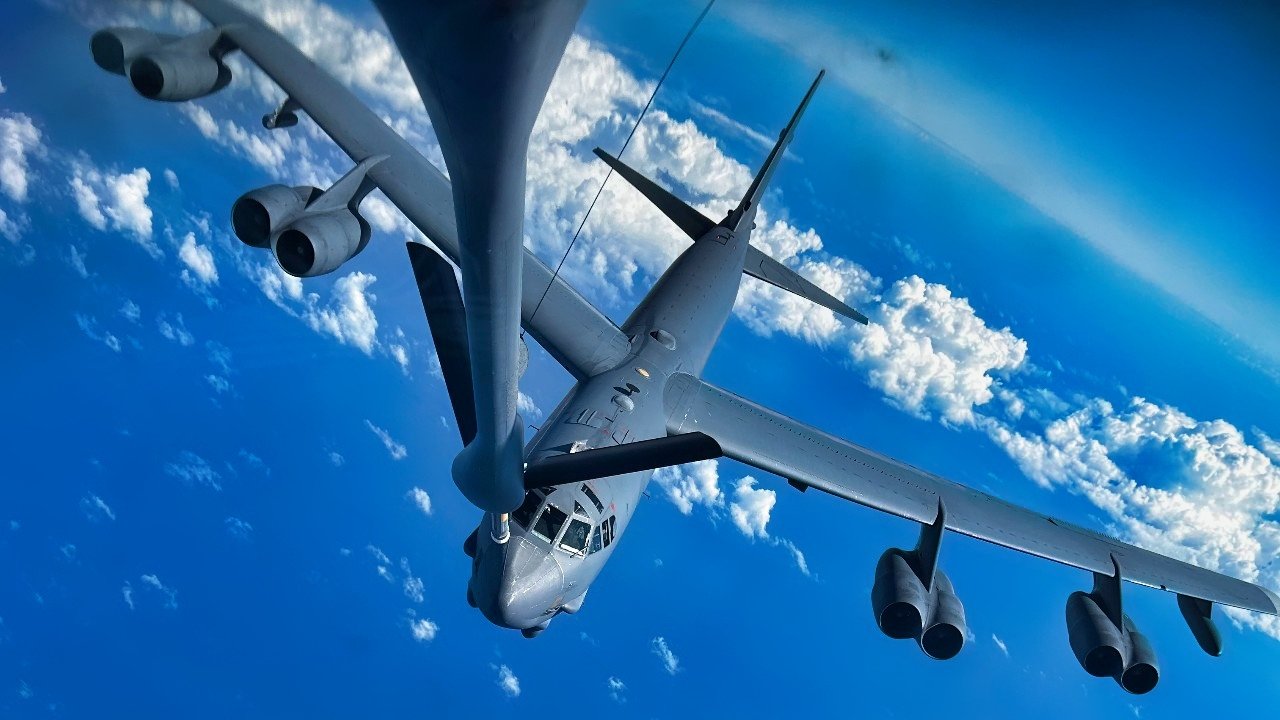What You Need to Know Now: The U.S. Air Force faces a critical gap in its long-range bomber capabilities, with the B-52J Stratofortress delayed until 2033, an aging B-52 fleet in disrepair, and the B-21 Raider still years away from operational readiness.

–This leaves America reliant on stretched B-52s and life-extended B-1s to maintain strategic deterrence. Geopolitical tensions, including the risk of conflict with Iran and other hotspots, could test this fragile fleet prematurely.
-While President-elect Trump has promised no new wars, the volatile global landscape and strained bomber readiness present vulnerabilities that adversaries may exploit before America’s bomber force is modernized.
The Air Force’s B-52J Nightmare is Here
America is facing cascading crises in its aging defense industrial base, as well as its funding mechanisms (because America is not in a position to continue funding its defense the way it has become accustomed to funding it). These ongoing cascading crises have led to massive readiness problems in the force.
Specifically, with America’s strategic long-range bombers.
There are three main systems that the United States Air Force relies on. The primary system is the B-52 Stratofortress. Another system is the B-1 long-range bomber. And the other system is the B-2 Spirit long-range stealth bomber. In all three cases, the Air Force is trying to expand its capabilities. For the B-2 Spirit, the Pentagon is desperately trying to build the B-21 Raider as a replacement for the handful of aging B-2s. The B-1 bombers are having their lives extended, too.

As for the B-52, the newest variant, the B-52J, will not be dominating the unfriendly skies until 2033.
Understanding the Problem on B-52J
America’s B-52 bomber force is even more important than its relatively small B-2 force because of how much the Americans rely upon these long-range strategic bombers (and have since the Truman administration).
Yet, modern combat has evolved so quickly in just the last few years, that making the Air Force depend upon the current, aging force of B-52s while waiting nine years for the first tranche of B-52Js to come online, is a surefire way to create critical strategic gaps in the US military’s force posture.
In fact, much of the B-52 fleet is in disrepair. With the strategic gaps forming in the B-1 bomber fleet, the B-21 Raider not being ready for showtime for many years to come, and the B-52J still in the offing, the next nine years will be a very dangerous point for America’s long-range strategic fleet.
Let’s just hope that the military can keep its bomber fleet going while American political leaders avoid major conflicts until the bomber fleet is solidified.

The Geostrategic Implications of an Aging Bomber Fleet
While President-Elect Donald Trump promised no new wars throughout his historic campaign for reelection, he is inheriting a world on fire, in which the United States appears on the brink of conflict basically everywhere. One wrong move, and the world could be plunged into a major conflict.
That’s to say nothing of the fact that the incoming Trump administration’s national security team is staffed by Iran hawks. Given how precarious the situation is in the Middle East, the new Trump administration could find itself having to deploy its long-range bombers to attack Iran—well before the Air Force is in a position to reliably do so (that is, without putting further strain on the already strained force).
As Harrison Kass cautioned readers recently, “getting to the point where both [the B-52J and B-21 Raider] are operational might take some patchwork and creativity.” And that’s where America’s increasingly powerful enemies just might find significant vulnerabilities they could exploit.
About the Author:
Brandon J. Weichert, a National Interest national security analyst, is a former Congressional staffer and geopolitical analyst who is a contributor at The Washington Times, the Asia Times, and The-Pipeline. He is the author of Winning Space: How America Remains a Superpower, Biohacked: China’s Race to Control Life, and The Shadow War: Iran’s Quest for Supremacy. His next book, A Disaster of Our Own Making: How the West Lost Ukraine, is available for purchase wherever books are sold. Weichert can be followed via Twitter @WeTheBrandon.
Image Credit: Creative Commons.
